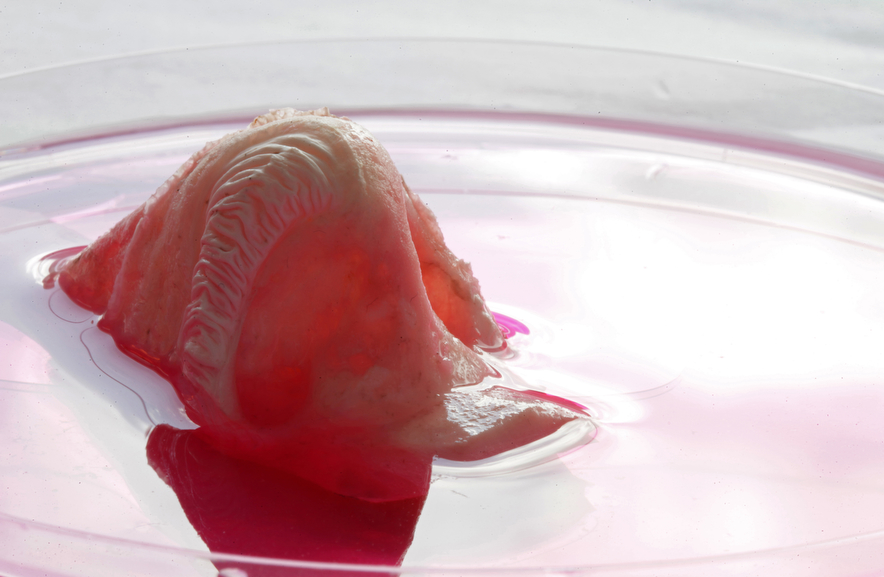December 19th, 2012 in Overweight and Obesity
Chinese researchers have identified a bacteria which may cause obesity, according to a new paper suggesting diets that alter the presence of microbes in humans could combat the condition.
Researchers in Shanghai found that mice bred to be resistant to obesity even when fed high-fat foods became excessively overweight when injected with a kind of human bacteria and subjected to a rich diet.
The bacterium—known as enterobacter—had been linked with obesity after being found in high quantities in the gut of a morbidly obese human volunteer, said the report, written by researchers at Shanghai's Jiaotong University.
The mice were injected with the bacterium for up to 10 weeks as part of the experiment.
The experiments show that the bacterium "may causatively contribute to the development of obesity" in humans, according to the paper published in the peer-reviewed journal of the International Society for Microbial Ecology (ISMEJ).
A human patient lost over 30 kilograms in nine weeks after being placed on a diet of "whole grains, traditional Chinese medicinal foods and prebiotics", which reduced the bacterium's presence in the patient's gut to "undetectable" levels, the paper said.
One of the report's authors, Zhao Liping, lost 20 kilograms in two years after adopting a diet of fermented probiotic foods such as bitter melon to adjust the balance of bacteria in his gut, the American magazine Science said in an article this year on his previous research.
Zhao's work on the role of bacteria in obesity is inspired by traditional Chinese beliefs that the gut is the "foundation for human health", Science reported.
The scientists wrote in their latest paper that they "hope to identify more such obesity-inducing bacteria from various human populations" in future research.
Obesity worldwide has more than doubled since 1980,
according to the World Health Organisation, with
more than 500 million adults worldwide suffering from the condition according to 2008 statistics.
(c) 2012 AFP
"China researchers link obesity to bacteria." December 19th, 2012.
Source:
http://medicalxpress.com/news/2012-12-china-link-obesity-bacteria.html
Researchers in Shanghai found that mice bred to be resistant to obesity even when fed high-fat foods became excessively overweight when injected with a kind of human bacteria and subjected to a rich diet.
The bacterium—known as enterobacter—had been linked with obesity after being found in high quantities in the gut of a morbidly obese human volunteer, said the report, written by researchers at Shanghai's Jiaotong University.
The mice were injected with the bacterium for up to 10 weeks as part of the experiment.
The experiments show that the bacterium "may causatively contribute to the development of obesity" in humans, according to the paper published in the peer-reviewed journal of the International Society for Microbial Ecology (ISMEJ).
A human patient lost over 30 kilograms in nine weeks after being placed on a diet of "whole grains, traditional Chinese medicinal foods and prebiotics", which reduced the bacterium's presence in the patient's gut to "undetectable" levels, the paper said.
One of the report's authors, Zhao Liping, lost 20 kilograms in two years after adopting a diet of fermented probiotic foods such as bitter melon to adjust the balance of bacteria in his gut, the American magazine Science said in an article this year on his previous research.
Zhao's work on the role of bacteria in obesity is inspired by traditional Chinese beliefs that the gut is the "foundation for human health", Science reported.
The scientists wrote in their latest paper that they "hope to identify more such obesity-inducing bacteria from various human populations" in future research.
Obesity worldwide has more than doubled since 1980,
according to the World Health Organisation, with
more than 500 million adults worldwide suffering from the condition according to 2008 statistics.
(c) 2012 AFP
"China researchers link obesity to bacteria." December 19th, 2012.
Source:
http://medicalxpress.com/news/2012-12-china-link-obesity-bacteria.html
China researchers link obesity to bacteria
....................................................................
*Remember ulcers were discovered to be caused by bacteria after years of other things, like stress, were blamed for causing the condition.

